2020 Honda Civic Review & Buying Guide | Variety show
https://ift.tt/32tTBlH
The Honda Civic has long represented smart, sensible transportation. It was affordable to buy, fuel and maintain. Many folks didn’t even bother shopping around to see what else was out there. If you’re expecting a “but things are different now” verdict for the 2020 Honda Civic, it won’t be coming. Of course, it’s actually a good idea to test drive its genuinely desirable and/or sensible alternatives (the Mazda3, Toyota Corolla, Hyundai Elantra, Kia Forte), but Honda’s compact car offers such a diverse selection of trims, body styles and performance levels that just choosing among Civics might be complicated enough.
And it doesn’t just have variety on its side. The Civic offers a well-rounded docket that goes beyond just dollars-and-sense matters. Its interior is spacious, comfortable and well-made. The turbocharged engine found in most trim levels provides excellent acceleration and fuel economy. Its ride and handling are well-balanced, while interior noise levels have fallen sharply from past versions. The Civic Si and Civic Type R, meanwhile, are two of the most desirable performance cars on the market. Basically, there’s a little something for everyone. It’s definitely worth a look.
What’s new for 2020?
The regular Civic sedan, coupe and hatchback are unchanged for 2020 after numerous updates last year. However, the high-performance Si sedan and coupe do see changes. Visually, this includes minor front and rear styling changes, new matte black wheels and additional red accents sprinkled throughout the cabin. In terms of feature content, the Honda Sensing suite of accident avoidance technology is now standard, having previously been unavailable. Mechanically, its 1.5-liter turbo engine remains unchanged on paper, but a shorter final drive ratio ultimately improves acceleration. A new Active Sound Control function pipes simulated engine noise through the stereo speakers. Information about the 2020 Civic Type R had not been released at the time of this writing.
What’s the Civic’s interior and in-car technology like?
The Honda Civic has a spacious interior that feels even more so thanks to a low dashboard and thin pillars. The materials are high quality, and you should find a comfortable driving position whether you prefer to sit low or high. The seats in normal Civics are a bit on the flat side, but they do feature stylish upholstery and have a reasonable amount of cushion. Both the Civic Si and Type R have increasingly more aggressive front seat bolsters that hold you snugly, but aren’t so firm that you feel pinched or poked.
All Civics get a digital display for the tachometer, speedometer and additional driving information, and the readouts are under deep cowls. Two types of infotainment systems are available. Low-trim models get a very basic system with a small screen and old-fashioned physical buttons and knobs for navigating through different functions. It does feature Bluetooth, a USB port and a media player interface, but is not compatible with Apple CarPlay or Android Auto. The second version comes with a 7-inch touchscreen that last year added physical buttons and volume knob. Unfortunately, the user interface is still ugly, sluggish and not particularly user friendly. The good news is that it does include Apple CarPlay and Android Auto, which are both much easier to use than the Honda software.
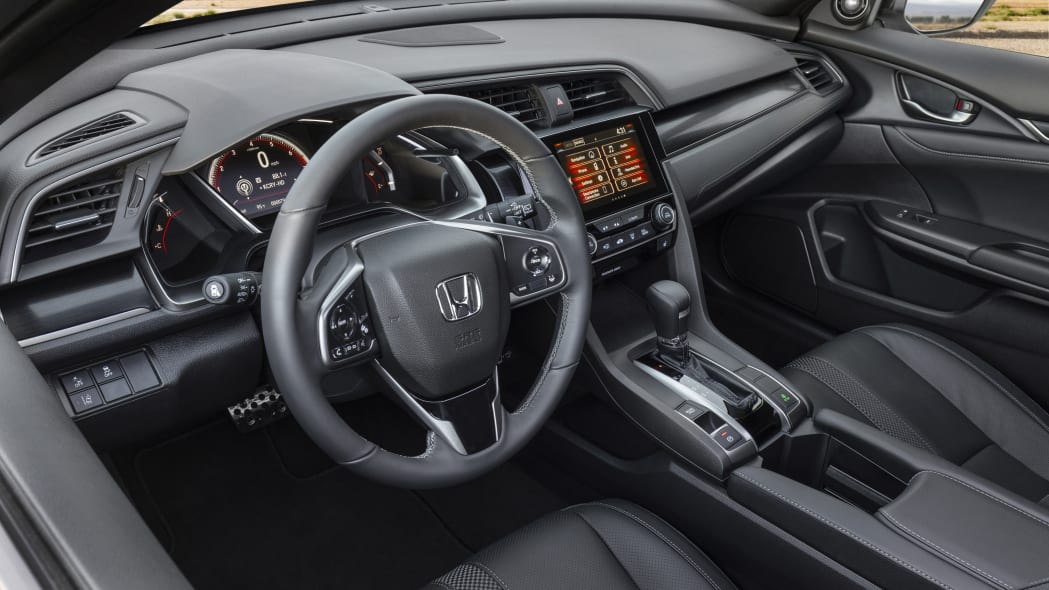
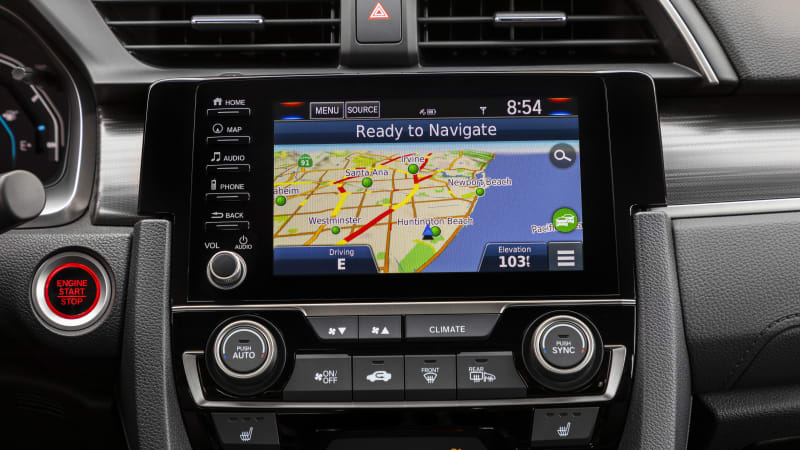
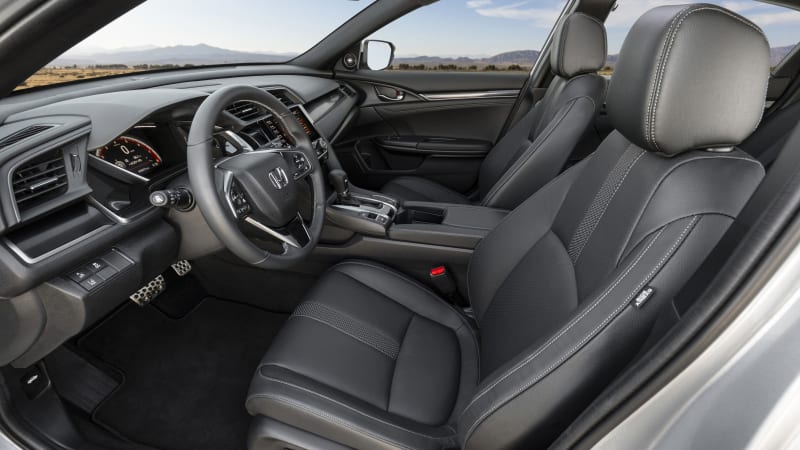
How big is the Civic?
The Honda Civic is on the larger side of the segment, but it’s within a few tenths of some other larger compacts. The only exterior trait significantly different from the competition is overall height, with the Civic sitting 1 to 2 inches lower than similar cars. The Civic is also one of the lighter cars in its class.
Inside, you’ll find the Civic offers more passenger and cargo space than most. In fact, it challenges some midsize cars. Leg- and headroom up front are exceptional, while folks of all sizes should be able to fit comfortably in the back (though its low seat somewhat hampers comfort). Even the coupe’s back seat is reasonably roomy, which would’ve been rare at one time, but as the sole surviving compact coupe, there’s no longer anything to compare it to.
Small item storage is superb thanks to a clever center console that features a deep bin, a sliding cupholder unit and a large, grippy area for smartphones. For large items, both the sedan and hatchback provide best-in-class cargo room with the rear seats up. That said, the hatchback is atypical, as its cargo area is much deeper and trunk-like than a Volkswagen Golf, for instance, but it’s not as tall restricting its usefulness for especially bulky items. We think it’ll be an acceptable trade-off for most.
Child seat access for all body styles of Civic gets the second highest rating of “Acceptable” from the IIHS.

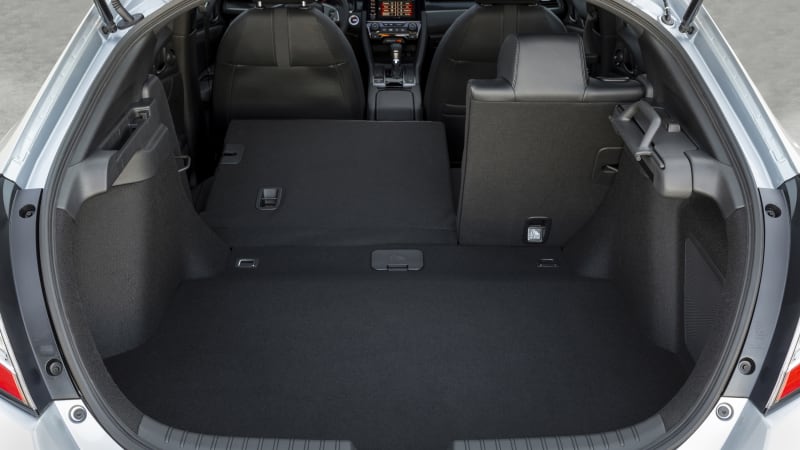
Sedan trunk left, hatchback trunk right
What’s the Civic’s performance and fuel economy?
The Honda Civic coupe and sedan in LX and Sport trims get a naturally aspirated 2.0-liter inline-four making 158 horsepower and 138 pound-feet of torque. It’s paired with either a six-speed manual transmission or a continuously variable automatic (CVT). Those numbers are on par with a number of compact cars, including the Hyundai Elantra and Subaru Impreza. It’s not a particularly exciting engine, but it is extremely smooth and refined. Despite packing the least power, the 2.0-liter Civics are not the most efficient. The manual versions get 29 mpg in combined driving, the Sport CVT gets 32 mpg and the LX CVT gets 33 mpg.
The most-efficient Civics are those with the 1.5-liter turbocharged four-cylinder that produces 174 hp and 162 lb-ft (the Sport hatchback produces a little more at 180 hp and 177 lb-ft). In the sedan, it gets 36 mpg in combined driving. The equivalent coupe gets 35 mpg, while the equivalent hatch gets 34 mpg. Note that fuel economy dips a little lower in the Touring trim levels and manual-equipped Sports.
Now, the Civic is one of the few compact cars to offer a high-performance variant. Actually, it offers two. The Honda Civic Si, which you can read about fully in our first drive review, makes 205 horsepower and 192 pound-feet of torque from its turbocharged 1.5-liter engine. It still manages to get a strong 32 mpg in combined driving. The Honda Civic Type R, which we covered in this driver’s notes review, gets a turbocharged 2.0-liter engine that makes 306 horsepower and 295 pound-feet of torque. Its fuel economy falls to 25 mpg combined.
What’s the Civic like to drive?
The average Honda Civic, regardless of whether you pick the sedan, coupe or hatchback, is a thoroughly well-rounded car to drive. The ride is comfortable and well-damped. The car feels light and nimble, cornering eagerly with little body roll. Steering is light but responsive and precise. The Civic also has a reasonably quiet and refined cabin.
These normal Honda Civics come with either a naturally aspirated four-cylinder or a turbocharged one. Both are smooth and quiet, but the turbo engine provides both better fuel economy and lots of torque. Both engines can be had with a manual transmission, and in Honda tradition, the stick is slick. The other transmission option is a CVT, which cause some drone during acceleration and makes both engines feel considerably different since they spend more of their time at lower rpm. Still, it’s smooth and responsive enough, and unlike some other CVTs, isn’t objectionable.
The hotter Si and Type R are the clear enthusiast choices. The Honda Civic Si has a hotter version of the basic turbo 1.5-liter engine, and it suitably feels incrementally gutsier – although rivals are considerably more powerful. It makes up for that with sharper steering, a mechanical limited-slip differential that aids traction on corner exit, and even an adjustable suspension. This provides a ride that is definitely firmer than the regular model in all modes, but never punishing. Really, the Si is one of the best performance bargains around.
The Civic Type R, on the other hand, is a superlative hot hatch. Its turbocharged 2.0-liter engine provides loads of power and torque, and it’s delivered in a shockingly smooth and civilized manner. It dives for corners and the steering feels millimeter-precise. This is a car that’s easy to drive fast and feels rewarding when you do so. Surprisingly, ride quality can almost be described as comfortable. It’s a very livable hot hatch that belies its absurd styling.
What more can I read about the Honda Civic?
Find out more about what changed for the 2020 Civic Si.
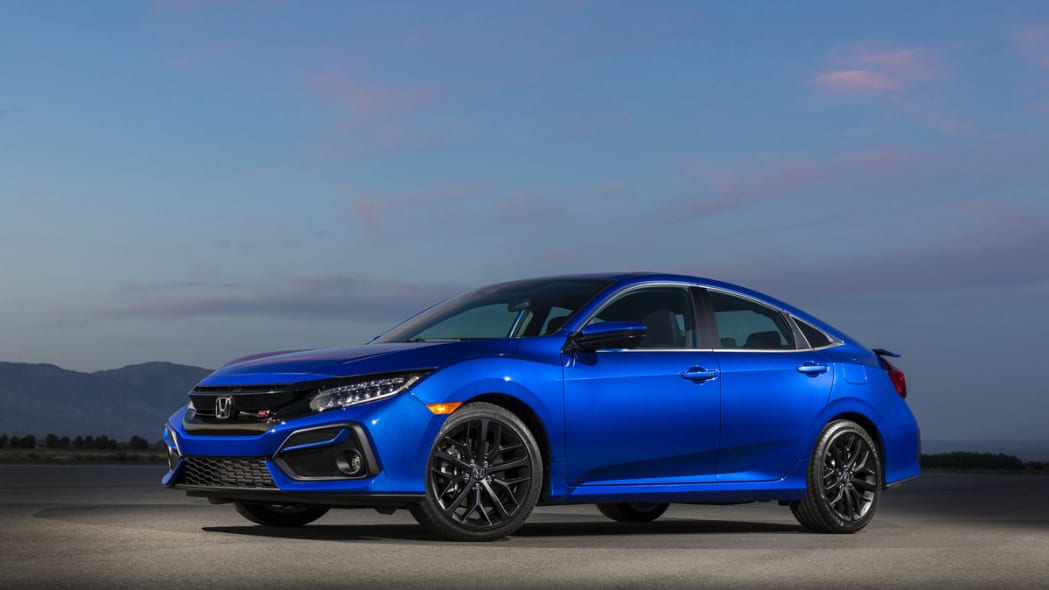
The 2019 Honda Civic is part of a generation first introduced for 2016. In this review, you can find In-depth information about the Civic’s design and engineering from that first year.

Our first drive review of the current-generation Honda Civic coupe with the naturally aspirated engine and manual transmission.

Our first drive review of the Honda Civic hatchback.

What features are available and what’s the Civic’s price?
Pricing for each of the trim levels and body styles can be found below. Standard feature content is quite generous, boasting standard accident avoidance tech, automatic climate control, adaptive cruise control, and Bluetooth and USB connectivity. Just keep in mind that the base LX and Sport trims have a less powerful and efficient engine in the sedan and coupe. The CVT is a $800 option on those trims specified. The hatchback comes standard with the turbo. All price below include the $930 destination charge.
You can find a complete breakdown of features, specs and local pricing here on Autoblog.
2020 Civic Sedan
- LX: $20,680
- Sport: $22,380
- EX: $24,630
- EX-L: $25,830
- Touring: $28,530
2020 Civic Coupe
- LX: $21,880
- Sport: $22,680 (CVT optional)
- EX: $24,430
- Touring: $28,080
2020 Civic Hatchback
- LX: $22,580
- Sport: $23,680 (CVT optional)
- EX: $25,080
- EX-L: $26,280
- Sport Touring: $28,980 (CVT optional)
2020 Civic Si
- Coupe: $25,930
- Sedan: $25,930
Pricing for the 2020 Civic Type R was not available at the time of this writing.
What are Civic’s safety equipment and crash ratings?
Every 2020 Honda Civic comes standard with forward collision warning, automatic emergency braking, lane-departure warning, and lane-keeping assist. Automatic high-beams are standard on the Civic coupe and sedan, but are optional on the hatchback. The only other real safety option is LaneWatch (standard on EX and higher), which is Honda’s alternative to blind-spot monitoring. It features a camera on the passenger-side mirror that displays what’s in the driver’s blind spot on the center stack. We don’t find it particularly helpful, and much prefer conventional blind-spot warning or a blind-spot mirror.
In Insurance Institute for Highway Safety crash testing, the 2019 sedan and coupe earned the highest “Good” rating in every crash test. The hatchback crashed just as well, though the IIHS hasn’t tested it for passenger small-overlap crashes. All models with the automatic emergency braking features earned top marks as well. Headlight performance was rated the lowest as “Poor” in all models with either projector lights or LED lights. Child seat LATCH anchor access was rated the second-highest “Acceptable” in all models.
The government gave the Honda Civic sedan and hatchback five stars for all crash tests including front, side and rollover. The coupe only got four stars for the front crash test and five for side and rollover tests.
Auto Blog
via Autoblog https://ift.tt/1afPJWx
October 18, 2019 at 11:18AM
